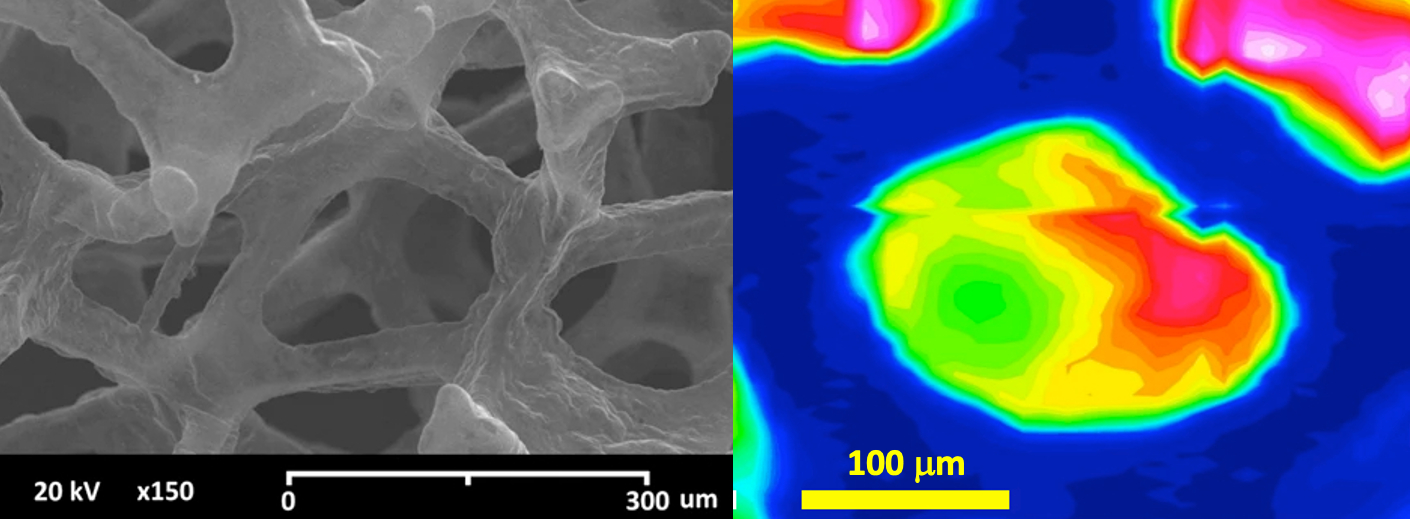Disordered photonics behavior from terahertz to ultraviolet of a three-dimensional graphene network
Due to the advances of nanotechnology and the discovery of various 2D functional materials, in recent years there has been a growing interest for extending their extraordinary properties to three-dimensional (3D) ordered and disordered structures.
The diffusion of light by random materials is a general phenomenon that appears in many different systems, spanning from colloidal suspension in liquid crystals to disordered metal sponges and paper composed of random fibers. Random scattering is also a key element behind mimicry of several animals, such as white beetles and chameleons. Here, random scattering is related to micro and nanosized spatial structures affecting a broad electromagnetic region. In this work, how random scattering modulates the optical properties, from terahertz to ultraviolet light, of a novel functional material, i.e., a three-dimensional graphene (3D Graphene) network based on interconnected high-quality two-dimensional graphene layers has been investogated. Here, random scattering generates a high-frequency pass-filter behavior. The optical properties of these graphene structures bridge the nanoworld into the macroscopic world, paving the way for their use in novel optoelectronic devices.
The transmission of light through the 3D graphene samples was measured using several different spectroscopic setups to span a very broad frequency range, from THz to UV.
The transmittance of a single polygon of the 3D network was analyzed through a Vertex70 V FT-IR interferometer coupled with an Hyperion3000 IR microscope equipped with a 64×64 pixel Focal Plane Array MCT detector at the SINBAD-IR beamline of the DAFNE-Light laboratory

Figure 1. [Left] SEM×150 magnified image of a 3D graphene sample (S1). The 3D network is composed by several polygonal structures connected to each other. [Right] Integrated infrared transmittance between 2000 and 3000 cm−1 of a single polygon of the undoped S1 sample, as taken by a 64 × 64 pixel Focal Plane Array (FPA) MCT detector.
Tomarchio, L., Macis, S., D’Arco, A. et al. Disordered photonics behavior from terahertz to ultraviolet of a three-dimensional graphene network. NPG Asia Mater 13, 73 (2021). DOI: 10.1038/s41598-021-97377-2
Contacts:
Prof. Stefano Lupi
Department of Physics, Sapienza University, Piazzale Aldo Moro 5, 00185, Rome, Italy
stefano.lupi@roma1.infn.it
